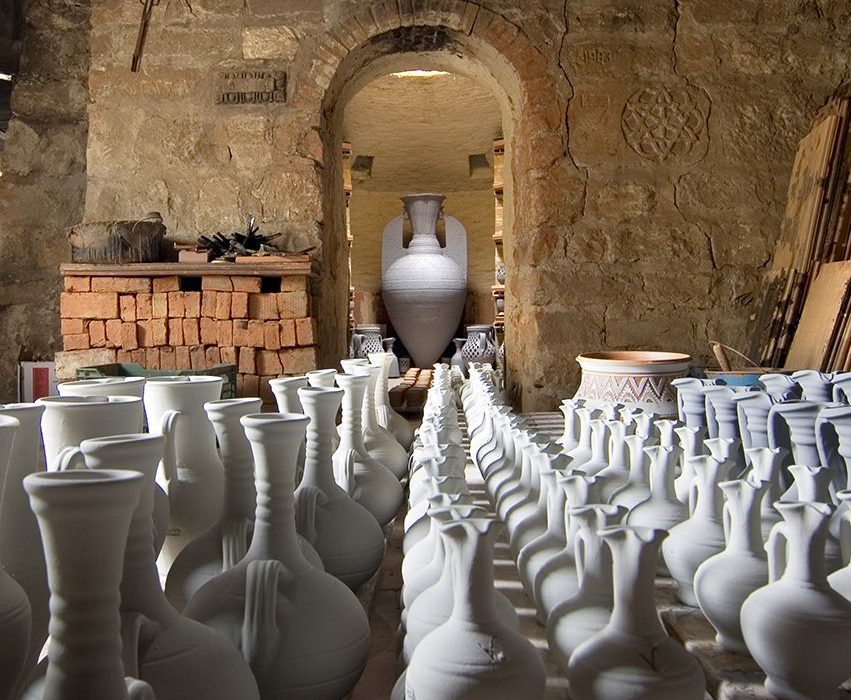
Pablo Tito’s Pottery is a living space, where the potter’s daily work is shown “in situ”....
Meet this craftsmanThe city of Úbeda has one of the largest and most varied concentrations of artisan workshops in Andalusia. The oldest traces of its past date back to 3,000 years before...Read more
...Christ, and this artisan production has Arab, Mudejar and Renaissance influences. The Mudejar origin of ubetense pottery has been maintained with extreme purity as evidenced by the use of the same techniques, such as the cooking of the pieces in Arabic wood-fired ovens. Esparto crafts have been around since the 11th century, in the Muslim era, with the renowned “ubedíes” rugs. The artistic forging has been maintained since the 16th century, conserving the techniques of the forge and the models in grid. Artistic lanterns, cruets, lanterns, and measurements are also being made in brass or tin. The work of stonework, although it has a long tradition, has hardly any artisans, as does the saddlery (leather crafts). There are also, artisans of wood, silver, and recently a stained glass workshop. In 2012, Úbeda was declared a Area of Artisan Interest by the Andalusian Government, although in 1972 the Potter, Francisco Martínez Villacañas, obtained the National Prize for Ceramic Design and Production. In 2006 the Potter Juan Martínez Villacañas received the National Crafts Prize and afterwards, different artisans have been finalists. In 2008 Juan Pablo Martínez Muñoz, (Tito, Alfarero), in 2009 Paco Luís Martos (Artesonados Mudéjares), in 2013 (José Garrido Rus (Forja Tiznajo), and in 2016 and 2017 Ubedíes Artesanía (works with esparto grass). In 2017 Forja Tiznajo and Artesanía Ubedíes have won the first Richard H. Driehaus Awards for Construction Arts, in different categories.The UNICAJA Award for Crafts has been in different years for Pottery Juan Tito e Hijo, Elena Rodríguez García, and José Garrido Rus.

Pablo Tito’s Pottery is a living space, where the potter’s daily work is shown “in situ”....
Meet this craftsman